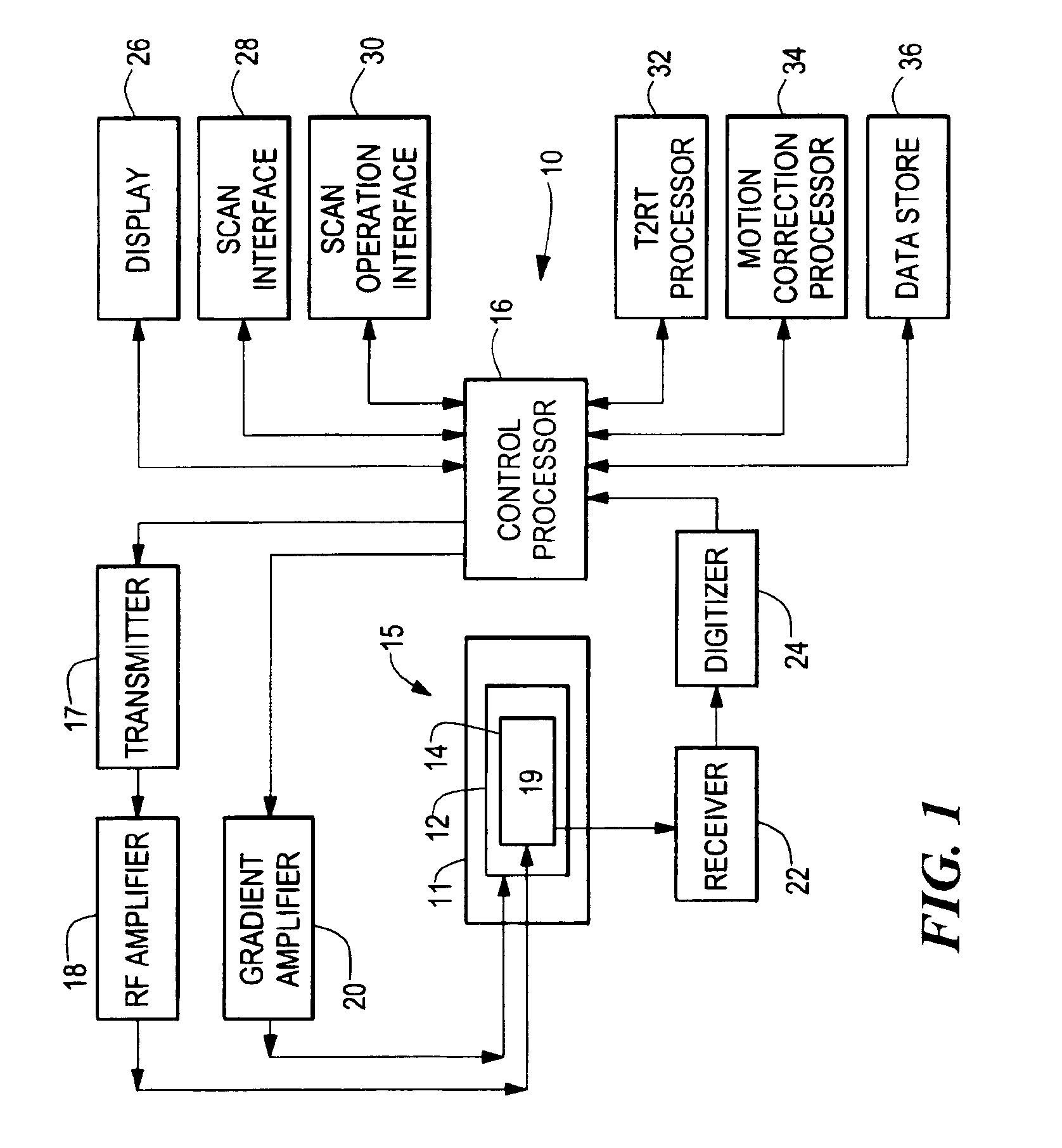Method for providing optimal drug dosage
a drug dosage and optimal technology, applied in the field of nuclear magnetic resonance characteristics measurement methods, can solve the problems of inability to provide insight into possible resting or steady-state, inability to persist under steady-state conditions, and mismatch between blood flow and oxygen extraction, etc., to achieve accurate determination of t2 rt using median, sensitive measurement of t2 rt, and better estimate of t2 rt
- Summary
- Abstract
- Description
- Claims
- Application Information
AI Technical Summary
Benefits of technology
Problems solved by technology
Method used
Image
Examples
example
[0110]Ten boys with ADHD (9.3±1.6 yr), and six healthy comparison subject boys (10.2±1.5 yr) were studied. Children with ADHD were screened using structured diagnostic interview (the Schedule for Affective Disorders and Schizophrenia for School-Age Children—Epidemiologic Version, “K-SADS-E”) and included if they met criteria for ADHD, and had at least 6 of 9 symptoms of inattention or hyperactivity-impulsivity. Children then took part in a triple blind (parent, child, rater), randomized, placebo-controlled study on the effects of methylphenidate (0, 0.5, 0.8, 1.5 mg / kg / day in two divided doses) on activity and fMRI. Children were treated continuously for one week with placebo or specific dose of methylphenidate. They were tested on day seven for drug response using objective measures of activity immediately following fMRI.
[0111]On test days, parents were instructed to give the afternoon dose 1 hour prior to their MRI appointment. Medication administration was assessed at each visit ...
PUM
 Login to View More
Login to View More Abstract
Description
Claims
Application Information
 Login to View More
Login to View More - R&D
- Intellectual Property
- Life Sciences
- Materials
- Tech Scout
- Unparalleled Data Quality
- Higher Quality Content
- 60% Fewer Hallucinations
Browse by: Latest US Patents, China's latest patents, Technical Efficacy Thesaurus, Application Domain, Technology Topic, Popular Technical Reports.
© 2025 PatSnap. All rights reserved.Legal|Privacy policy|Modern Slavery Act Transparency Statement|Sitemap|About US| Contact US: help@patsnap.com



